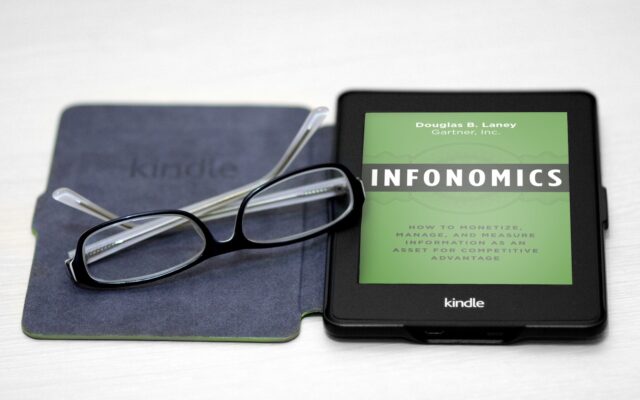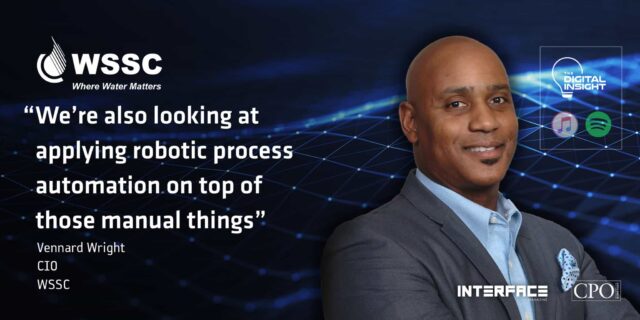In a world where connected, consistent and differentiated experiences are born from closely aligned technology teams and marketing functions, the spotlight is on the collaborative relationship between a CIO and a CMO.
The traditional role and responsibilities of the CIO has altered as a result. As ‘2019 State of the CIO’ research highlights, 55% of CIOs are spending more time learning about customer needs as a way to foster the creation of revenue-generating initiatives[1] – prime marketing territory. While, according to Forrester, a CMO’s collaboration with a CIO is one of the four essential steps in planning their marketing evolution[2]. It’s clear that to deliver extraordinary brand experiences through robust systems built on a foundation of strong architectural principles, these two roles must seamlessly align.
Defining your differentiating experience
Today, 89% of companies compete primarily on the basis of customer experience[3]. In this competitive environment, the biggest challenge CMOs have is making sure their brand is delivering a truly differentiating experience. And while 80% of companies believe they are delivering these ‘superior experiences’ to their customers, only 8% of customers would agree[4]. While brands may deliver on customer experience promises and meeting customer expectations, few are creating those competitive advantages that give customers that little bit extra.
Forrester identifies this as ‘digital sameness’ – companies solving the same problems in the same ways over and over, therefore creating the same experiences. “The experiences of the world’s leading brands languish, lapse, lockstep, or lag because their customers struggle to separate one experience from another.[5]”
So how do you stand out in the landscape of digital sameness? Thirty years of helping brands like BBC, The Gym Group and Pinsent Masons has taught us that if customer experience matches customer expectations, then brand experience exists to create meaningful difference.
That’s why brand experience needs to sit above customer experience. This involves identifying and investing in hero moments along the journey – specifically where your brand could credibly provide a unique experience – which will create a memorable and differentiated experience for your customers.
It’s these unique experiences and offerings that will keep people coming back to you (loyalty) and start encouraging them to talk about you to their friends (advocacy). Brands with a strong brand experience command 79% higher purchase intent and an average of 45 more Net Promoter Score points than those who offer a lesser experience[6].
Driving your differentiating experience
When it comes to driving brand experience, there is no question of the importance of technology. After all, companies who create technology-driven differentiation see growth 4x faster than the competition[7]. Aligning the activities around brand experience bring focus and priority to the CIO and CMO relationship as well as ensuring you meet your customer’s digital expectations. At the heart of this business-critical relationship is your platform.
It’s the CIO’s job to provide the blueprint and platform to deliver experiences in a way which manages costs, threats and risks to the business. It’s not just about efficient IT provisioning; if the platform isn’t accessible, fast enough, or can be easily compromised it will cost – both in business and reputation. The platform is the key to growth and efficiency; allowing you to create new highly personalised services more easily and expand seamlessly with new partners or new channels using your services.
So how do you build an intelligent business core that facilitates and orchestrates internal and external ecosystems, all while delivering experiences driven by data, content and insight from people, process and platforms? And that’s not all; it also needs to connect your back-end and front-end distribution channels to create actionable insight which will help you evolve and optimise your product and service development.
Ultimately, you’re looking for a platform that can inform high-quality propositions quicker than your competitors, as well as creating operational efficiencies through automation to drive more contextually relevant customer experiences. A big ask? The good news is there are a number of routes you can take to develop a robust platform:
- Commitment to a full enterprise stack
- A vendor PaaS solution
- A CMS that has some experience and headless features
- Distributed channel logic
- A centralised Omnichannel Experience API which you own
Choosing a robust, omnichannel solution
There are pros and cons to each option, but if you want something that lets you control and own your business experiences, is highly portable, open source and more easily maintained, for many modern businesses your best option is a centralised Omnichannel Experience API (OX.api).
An OX.api framework provides the capabilities to curate the experiences the CMO craves across all of your channels through solid technical engineering, adhering to architectural principles such as:
- Availability: Multi-layered, HA, zero downtime deployments, and caching strategies
- Data quality: Single source of truth, upholding compliance such as GDPR
- Interoperability: Best practice, standards, portability, and SOLID principles
- Secure by design: Multi-layered security designed with cyber security specialists
- Resilience: Service bus for integrity, and containerisation to ease DevOps
- Performance: Maximise the use of elastic computing and the Cloud, blend Cloud and Edge, and build for performance
Investing in a platform with these capabilities essentially aligns the CMO’s agenda with the CIO’s agenda. It unites your brand purpose to your tech stack, allowing technology to deliver the experiences customers want.
Your key takeaway
When
you connect and power the experiences your CMO craves with the tools and
systems your CIO needs, you can unlock the unique and meaningful moments that
will truly set your brand apart from the competition. The opportunity available
can’t be denied. Not only is it about fulfilling what your customers demand,
but rather creating an infrastructure for innovation and optimisation. Taking
your customer experience beyond the status quo is the key to unlocking market
share and driving growth – which is ultimately what will separate the industry
leaders from the followers.
[1] IDG – https://www.idg.com/tools-for-marketers/2019-state-of-the-cio/
[2] Forrester – https://www.forrester.com/report/Four+Steps+To+Establish+An+Innovative+Marketing+Function/-/E-RES139931
[3] Gartner – https://www.gartner.com/smarterwithgartner/customer-experience-battlefield/
[4] Bain & Co – https://medium.com/@CMcVoy/80-of-ceos-believe-they-deliver-superior-customer-experience-661efabd16b0
[5] Forrester – https://go.forrester.com/blogs/brand-experience/
[6] WARC – https://www.warc.com/newsandopinion/news/from_hero_to_nearo_why_understanding_brand_experience_matters/
[7] Forrester – https://go.forrester.com/blogs/if-you-want-to-dominate-then-disrupt/











